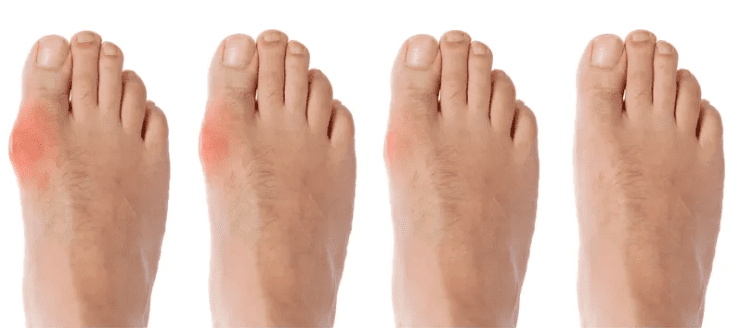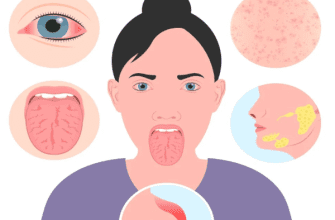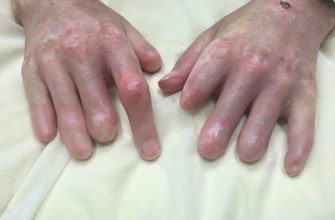Gout is a common and complex form of inflammatory arthritis characterized by sudden, severe attacks of pain, swelling, redness, and tenderness in the joints.
What It Is
At its core, gout is a disorder of uric acid metabolism. It occurs when urate crystals accumulate in a joint, causing intense inflammation and pain. This buildup happens when there are high levels of uric acid in the blood, a condition known as hyperuricemia.
Uric acid is a waste product formed from the breakdown of purines, substances found naturally in your body and in certain foods. Normally, uric acid dissolves in your blood, passes through your kidneys, and is excreted in urine. But if your body produces too much uric acid or your kidneys excrete too little, it can build up and form sharp, needle-like urate crystals in a joint or surrounding tissue.
Causes & Risk Factors
The primary cause of gout is hyperuricemia. Several factors can contribute to high uric acid levels:
- Diet: Eating a diet rich in red meat, organ meats (liver, sweetbreads), and certain seafood (anchovies, sardines, mussels, scallops).
- Alcohol: Heavy consumption of alcohol, especially beer and spirits, interferes with the removal of uric acid.
- Sugary Drinks: Beverages sweetened with fructose (high-fructose corn syrup) can increase uric acid levels.
- Obesity: Being overweight causes the body to produce more uric acid and makes it harder for the kidneys to eliminate it.
- Medical Conditions: Certain diseases like untreated high blood pressure, diabetes, metabolic syndrome, and kidney disease can increase risk.
- Medications: Low-dose aspirin, some diuretics (“water pills”), and anti-rejection drugs for organ transplants can raise uric acid levels.
- Family History: If other family members have had gout, you’re more likely to develop it.
- Age and Sex: Gout occurs more often in men, primarily because women tend to have lower uric acid levels. After menopause, women’s uric acid levels approach those of men. Men are also more likely to develop it earlier (between 30 and 50), while women typically develop symptoms after menopause.
Symptoms
Gout attacks often strike suddenly and at night. The classic symptoms include:
- Intense Joint Pain: Typically affects the large joint of the big toe but can also occur in the ankles, knees, elbows, wrists, and fingers. The pain is often described as excruciating.
- Lingering Discomfort: After the most severe pain subsides, some joint discomfort can last from a few days to a few weeks. Later attacks are likely to last longer and affect more joints.
- Inflammation and Redness: The affected joint becomes swollen, tender, warm, and red.
- Limited Range of Motion: As gout progresses, you may lose the ability to move your joints normally.
Diagnosis
Doctors typically use a combination of methods to diagnose gout:
- Physical Examination: Assessment of the affected joint.
- Blood Test: To measure the levels of uric acid in your blood. However, a high level alone does not confirm gout, and some people have an attack with normal levels.
- Joint Fluid Test (Arthrocentesis): The most definitive test. Fluid is drawn from the affected joint and examined under a microscope for the presence of urate crystals.
- Imaging: X-rays, ultrasound, or a dual-energy CT scan can help detect joint damage or crystal deposits.
Treatment
Treatment involves managing acute attacks and preventing future ones.
- For Acute Attacks:
- NSAIDs: Over-the-counter like ibuprofen or naproxen, or prescription-strength.
- Colchicine: A pain reliever that effectively reduces gout pain.
- Corticosteroids: Such as prednisone, for patients who cannot take NSAIDs or colchicine.
- Preventing Future Attacks (Uric Acid-Lowering Medications):
- Xanthine Oxidase Inhibitors: Allopurinol and Febuxostat limit the amount of uric acid your body makes.
- Uricosurics: Probenecid helps your kidneys remove uric acid.
Prevention
Lifestyle changes are crucial for preventing gout attacks:
- Stay Hydrated: Drink plenty of water to help flush uric acid from your body.
- Limit Alcohol: Especially beer and spirits.
- Eat a Balanced Diet: Reduce intake of red meat, organ meats, and high-fructose drinks.
- Maintain a Healthy Weight: Lose weight gradually, as rapid weight loss can temporarily raise uric acid levels.
- Choose Low-Fat Dairy: These may have a protective effect against gout.
Prognosis
Gout is a highly manageable condition. With early diagnosis, proper treatment, and lifestyle modifications, most people with gout can live normal, active lives and avoid long-term joint damage. If left untreated, gout can lead to:
- Recurrent Gout: Frequent and more painful attacks.
- Advanced Gout: Tophi (TOE-fie), which are deposits of urate crystals under the skin, often on fingers, hands, feet, or elbows.
- Kidney Stones: Urate crystals can collect in the urinary tract.
When to See a Doctor
You should seek medical advice if you experience:
- Sudden, Intense Pain in a Joint: Especially in your big toe.
- A Joint that is Hot, Swollen, and Red: This could indicate an infection or gout.
- A Fever with Joint Pain: This is a sign of a more serious condition.
- Recurrent Attacks: If you’ve had gout before and are experiencing another flare-up.






